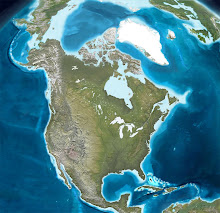By Steve Hammons
There seem to be many indications that modern humans are discovering or rediscovering knowledge and understanding that were known to ancient people.
One example might be the research into extrasensory perception (ESP). The operational intelligence "remote viewing" activities conducted by the U.S. program known as Project STAR GATE provided solid evidence that humans do have a “sixth sense.”
Historically, other cultures have also believed that humans can perceive information from within, using what we might call intuition, instinct, gut feelings or visions.
For example, Native American Indians had “vision quests” and other kinds of activities to help them perceive in different ways. Dreams and other non-logical perceptual experiences were thought to sometimes contain valuable information as well.
Another possibly-related field of investigation is the inquiry into concepts about multiple dimensions in our universe.
OTHER DIMENSIONS NEARBY
One idea of how the universe might be structured is called the “Calabi-Yau space.” It has been described as somewhat resembling a crumpled-up and folded-up piece of paper.
In this concept, time and space as well as other aspects of the universe twist and turn, and even fold back upon one another. Multiple dimensions – many of which we cannot easily perceive – are nearby.
This view could explain unusual phenomena that we sometimes refer to as anomalous, metaphysical or even paranormal. They might actually be normal.
Certain ideas about the movement between dimensions seem more feasible when looking at a visual representation of the Calabi-Yau space concept.
A close proximity of other dimensions folding upon or bumping into one another might help explain odd unidentified flying objects (UFOs) and reports of beings and creatures who may cross boundaries of one dimension into another and back again.
The nonlinear view of space also can apply to time as well as other elements of life.
Things we see and experience might have multiple connections in multiple ways, some of which don’t always make logical sense to us.
This nonlinear concept is also common to Native American Indian cultures. These nonlinear views of Nature and the Universe sometimes include the circle or cycle.
According to the Oklahoma Historical Society’s Encyclopedia of Oklahoma History & Culture, “As nonlinear people, Indians are cyclical by nature. Day changing into night is a cycle, the full moon's monthly repetition is another cycle, and the seasons rotate as well. Nonlinear reality is a powerful theme in the Oklahoma Indian experience.”
PERCEPTUAL SYNERGY
However, in light of new theories about physics, even the circular or cyclical view of reality may be overly simplified.
Lakota philosopher, historian, speaker, broadcaster and musician Tiokasin Ghosthorse has noted that Native American Indians, the first people of the Americas, accept the many interesting aspects of Nature and the Universe.
Dealing with unconventional intelligent beings who may visit from time to time, different modes of human perception, alternative views of time and space, and acceptance of the Universe as a mysterious place are part of this perspective, Ghosthorse has said.
Here in North America, we are uniquely positioned to tap into this ancient viewpoint about the nature of reality and the nature of Nature. Many people in North America have mixed genetic backgrounds that include varied combinations of European, African and Native American DNA (as well as other ethnic roots).
These backgrounds could be helpful in creating a synergy of understanding by merging many perspectives and histories to come up with a new paradigm of reality.
With new theories of physics and mathematical formulations trying to explain the universe emerging alongside our ancient experiences and knowledge, we might soon discover a more accurate understanding of the world around us and within us.
skip to main |
skip to sidebar

In the past 30 days, readers from approximately 40 countries or territories using about 20 languages visited the Joint Recon Study Group site.

To see more articles, scroll down the right-side column.

Steve Hammons

Articles from the Joint Recon Study Group site and Transcendent TV & Media site are included.
The Joint Reconnaissance Study Group is the San Diego-based, combined-service/agency, research-and-activities team in my novels "Mission Into Light" and sequel "Light's Hand." This site contains information of interest to the JRSG.
Home page: Joint Recon Study Group site
Readers from around the world visit this site.

In the past 30 days, readers from approximately 40 countries or territories using about 20 languages visited the Joint Recon Study Group site.
April 2021 threat alert: ‘Force protection’ for our troops now the responsibility of all Americans
First responders must deal with society’s problems, shortcomings, injustices every day
Could some UFOs be linked to Native American 'white stone canoe' legends, stories?
Wildland firefighter basic training available at community colleges, tech schools, training centers
‘Boomer remover’ coronavirus is bigger threat to WWII generation that saved the world
‘Black swan’ events that aren’t: Coronavirus, climate emergency, unidentified aerial phenonema
Reagan’s complete 1987 UN message on ‘alien threat’ overlooked: Grave danger here, now
Was Reagan briefed about UFOs and original ‘Day the Earth Stood Still’ movie?
My military draft lottery number was #165 during final Vietnam War years
“Keep On The Sunny Side,” by The Whites, from movie O Brother, Where Art Thou?”
Living along Ohio River for centuries, Native Shawnee called it ‘Kiskepila Sepe’ – ‘Eagle River’
Native American words around us: States, towns, rivers, lakes, terrain, plants, animals, military
Athens County, Ohio, was key spot when colonists, Redcoats fought Shawnee in 1774 battle
1787 Northwest Ordinance set course for Ohio, Indiana, Illinois, Michigan, Wisconsin, Minnesota
Smallpox-tainted blankets were 1763 bioweapon on northern Appalachian Mountains frontier
Diana Krall performs “Maybe You’ll Be There" live in Paris with Paris Symphony Orchestra 2001.
Books to read in 2021? Novels "Mission Into Light" and the sequel "Light's Hand"
Novel excerpt: Renew, prepare America with ‘Urgent Response Group’ for teens, young adults
Diana Krall performs “I Get Along” live in Paris with Paris Symphony Orchestra 2001.
Steve Tyrell sings “Give Me the Simple Life.”
Diana Krall performs “Love Letters” live in Paris with Paris Symphony Orchestra 2001.
Visit the article archives!

To see more articles, scroll down the right-side column.
Novel "Mission Into Light" overview on Amazon
Novel "Light's Hand" overview on Amazon
Adventures of the Joint Recon Study Group: Overview and synopses of activities and operations
Key chapter overviews: Points of interest in the novel "Mission Into Light"
Key chapter overviews: Points of interest in the novel "Light's Hand"
Multimedia rights available
English and foreign-language book rights, audio book and e-book rights for "Mission Into Light" and "Light's Hand" are available. Movie and TV rights are available.
I'm seeking agent representation for these works and rights.
Please contact Steve Hammons for more information at hammons55@gmail.com.
Feature film screenplay
I completed a feature film screenplay in 2006 based on “Mission Into Light” and “Light’s Hand” combining key elements of both novels.
The screenplay takes audiences into the adventures and discoveries of the Joint Recon Study Group and the relationships among team members, friends and associates as they explore leading-edge research and emerging transcendent developments.
I'm seeking agent representation for this screenplay.
.........................
I also wrote a TV series pilot script based on "Mission Into Light" and "Light's Hand" story. I'm seeking agent representation this script.
About the Author

Steve Hammons
About the Author
I was born and raised in southwestern Ohio near the Kentucky and Indiana borders, then went to college at Ohio University in the southeastern Appalachian region of the state near West Virginia.
I graduated with a dual major in communication (journalism focus) and health education (psychology focus) with a minor in pre-law.
Ohio U. is home to the respected Scripps College of Communication and E.W. Scripps School of Journalism.
I also completed two graduate-level courses in guidance counseling theory and method at Ohio U.'s College of Education, School of Applied Behavioral Sciences and Educational Leadership.
At the end of my undergraduate education at Ohio University, I moved to the beautiful American Southwest where I applied my education, continual training and and ongoing experience to related professional fields such as health care, journalism and special research areas.
My novels "Mission Into Light" and the sequel "Light’s Hand" are available in e-book and 6"x9" paperback from most online booksellers worldwide.
Readers review metaphysical-military-intelligence adventure novel ‘Mission Into Light’
My articles on DoD CultureReady blog, Defense Language and National Security Education Office
Transcendent TV & Media site
Past articles: Scroll down the right-side column for more articles.

Articles from the Joint Recon Study Group site and Transcendent TV & Media site are included.































































































































































































